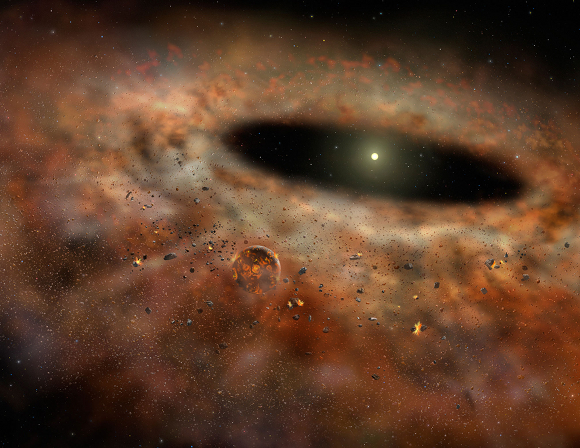A team of researchers at NASA’s Ames Research Center in Moffett Field, California, have successfully reproduced on Earth the processes which occur in the atmosphere of a red giant star leading to the formation of planet-forming interstellar dust. The scientists achieved this feat using the Cosmic Simulation Chamber (or COSmIC), a specialized facility that lets researchers recreate and analyze dust grains similar to those formed in the outer layers of dying stars. Using this study of the space dust, they plan to comprehend better the composition and evolution of the universe.

As per the Swinburne Center for Astrophysics and Supercomputing at the Swinburne University of Technology, Australia, the dust grains formed around dying stars get ejected into the interstellar medium lead, after a lifecycle extending to millions of years, finally leading to the formation of planets, and hence are an important part of the universe’s evolution. Farid Salama, project leader and a space science researcher at Ames, stated that the harsh space conditions were difficult to reproduce in a laboratory, and these very conditions have long hindered their efforts to analyze and interpret the observations from space. But now using COSmiC simulator, researchers can now discover clues to the many questions surrounding the composition and evolution of universe – both being major objectives of NASA’s space research program.
In past experiments, the inability to simulate space conditions in gaseous state restricted scientists from deducing unknown matter. As conditions in space are exceedingly different from that of Earth, it’s very challenging to identify extraterrestrial materials. However, with COSmiC entering the play, researchers can now successfully simulate gaseous environments just like interstellar clouds, stellar envelopes or planetary atmospheres environments by expanding gases using a cold jet spray of argon gas seeded with hydrocarbons to cool down the molecules to temperatures corresponding to these environments.
The observations registered from these experiments hold important implications in the study of astrophysics as well as in planetary science.
A team of researchers at NASA’s Ames Research Center in Moffett Field, California, have successfully reproduced on Earth the processes which occur in the atmosphere of a red giant star leading to the formation of planet-forming interstellar dust. The scientists achieved this feat using the Cosmic Simulation Chamber (or COSmIC), a specialized facility that lets researchers recreate and analyze dust grains similar to those formed in the outer layers of dying stars. Using this study of the space dust, they plan to comprehend better the composition and evolution of the universe.
As per the Swinburne Center for Astrophysics and Supercomputing at the Swinburne University of Technology, Australia, the dust grains formed around dying stars get ejected into the interstellar medium lead, after a lifecycle extending to millions of years, finally leading to the formation of planets, and hence are an important part of the universe’s evolution. Farid Salama, project leader and a space science researcher at Ames, stated that the harsh space conditions were difficult to reproduce in a laboratory, and these very conditions have long hindered their efforts to analyze and interpret the observations from space. But now using COSmiC simulator, researchers can now discover clues to the many questions surrounding the composition and evolution of universe – both being major objectives of NASA’s space research program.
In past experiments, the inability to simulate space conditions in gaseous state restricted scientists from deducing unknown matter. As conditions in space are exceedingly different from that of Earth, it’s very challenging to identify extraterrestrial materials. However, with COSmiC entering the play, researchers can now successfully simulate gaseous environments just like interstellar clouds, stellar envelopes or planetary atmospheres environments by expanding gases using a cold jet spray of argon gas seeded with hydrocarbons to cool down the molecules to temperatures corresponding to these environments.
The observations registered from these experiments hold important implications in the study of astrophysics as well as in planetary science.